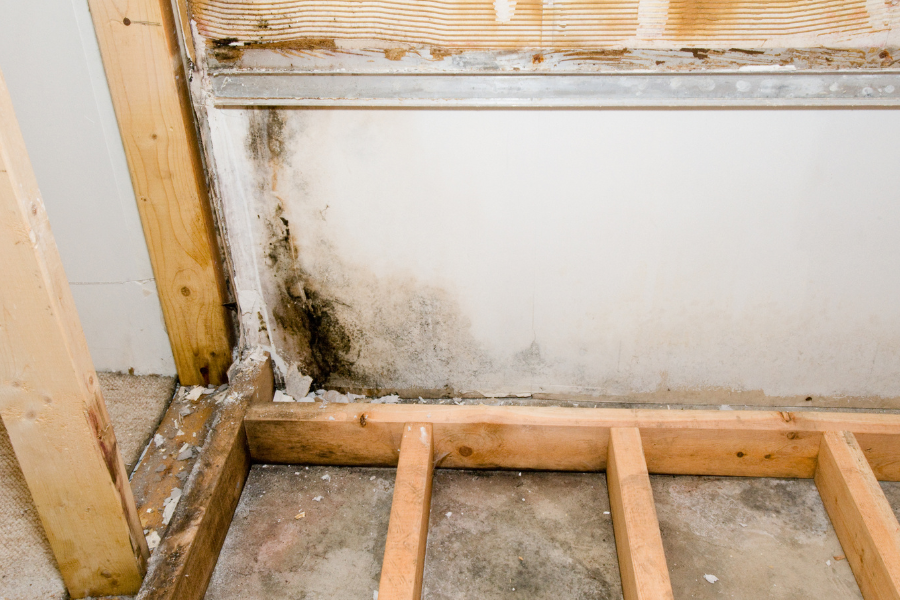Let’s talk about something we deal with far too often: mold.
We’ve walked into countless homes where the basement smells musty, walls are discolored, and nobody’s quite sure what’s going on. The truth is simple: where there’s moisture, there’s mold.
At Basement Remedy, we want homeowners to know that waterproofing isn’t just about stopping leaks—it’s one of the most effective ways to prevent mold growth in the first place.
The Moisture-Mold Connection
Mold doesn’t need standing water to thrive. All it needs is:
- Moisture (even just high humidity)
- A food source (like drywall, wood, or dust)
- Poor airflow
Your basement is the perfect environment. And once mold spores take hold, they don’t just stay on the surface. They dig into porous materials like wood framing and insulation, spreading quietly behind walls and under floors.
Waterproofing = Mold Prevention
So how does waterproofing actually stop mold?
Here’s what we focus on:
- Stopping exterior water intrusion so walls and floors stay dry
- Installing or improving drainage systems to redirect groundwater
- Reducing humidity with proper air circulation or dehumidifiers
- Preventing vapor buildup that leads to condensation and rot
When we seal a foundation from the outside and ensure your drainage is working, we cut off mold’s #1 ingredient—moisture. Without it, the spores can’t grow or spread.
Already Have Mold? You’ll Need Both Solutions
If your basement already has mold, waterproofing alone won’t remove it—you’ll need a licensed mold remediation company to treat and encapsulate the spores. But once it’s cleaned up, waterproofing keeps it from coming back.
Think of it like this:
- Mold remediation = clean-up crew
- Waterproofing = security system
You can’t just do one and ignore the other.
Why Painting Over Mold Is a Terrible Idea
We see this mistake constantly. Homeowners try to paint over mold with waterproof paint or primer, hoping to cover it up. Not only does that fail, but it traps the spores in and creates a perfect breeding ground for new growth.
If you’ve used waterproof paint over damp walls, you might be sealing moisture into the structure—making the problem worse and hiding it until it’s too late.
Dehumidifiers Help—But They’re Not the Cure
Running a dehumidifier can absolutely help reduce moisture in the air, especially during humid Ohio summers. But if water is coming through your walls, floor, or from underground, a dehumidifier won’t solve the root issue.
It’s like mopping up a leak without fixing the pipe.
We’ve Seen It All: Real Mold Horror Stories
We once worked on a house with field tile lines draining straight into the foundation—creating constant, hidden water flow. The homeowners had no idea why they kept smelling mold, even though everything looked dry.
Once we excavated and waterproofed the exterior and rerouted the drainage, the basement finally stayed dry. The mold? It was behind the drywall—ruining insulation, studs, and more. If we hadn’t opened up the wall, they never would’ve known until they tried to finish the space.
Waterproof Now. Breathe Easier Later.
If you want a healthy basement (and healthy air in the rest of your home), stopping moisture is the first step. Mold spores can affect allergies, breathing, and even structural integrity if they’re allowed to spread.
Get ahead of the issue before it becomes a full-blown remediation project.
At Basement Remedy, we’ll inspect your basement for free and tell you if moisture is entering—whether you see it or not. Don’t wait until mold makes itself obvious. Prevention is cheaper, cleaner, and safer.
Searching for:
- “how to prevent mold in my basement”
- “does waterproofing stop mold?”
- “basement smells musty”
- “moisture control solutions Ohio”
Let’s stop it before it starts. Basement Remedy has your back.




Leave a Reply